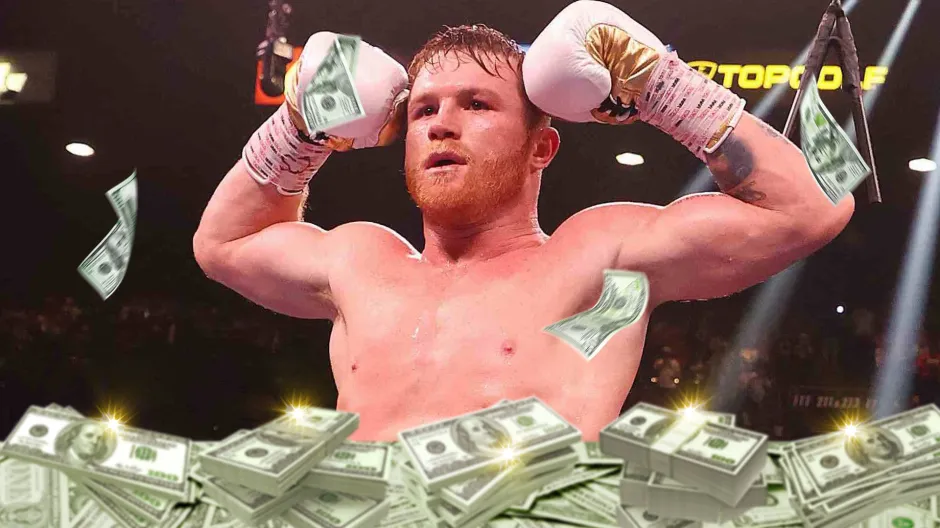More than just a headline, Canelo Álvarez’s $300 million fortune is the result of strategy, perseverance, and a remarkable ability to combine entrepreneurial boldness with athletic discipline. Although his battlefield has been a squared ring and a boardroom, his story is remarkably similar to how great industrial leaders once turned unbridled ambition into dynasties.

At fifteen, when most teenagers are barely making it through school, he started boxing professionally. Canelo had already won several titles by 2011, establishing himself against top opponents and moving up the weight ladder quickly. His ability to adapt was especially creative; he successfully transitioned from light middleweight to light heavyweight, something that very few people in history can say they have done. His 2019 knockout of Sergey Kovalev demonstrated his remarkable power, but more significantly, it showed how easily he could change who he was.
Bio and Career
| Category | Information |
|---|---|
| Full Name | Santos Saúl Álvarez Barragán |
| Nickname | “Canelo” |
| Date of Birth | July 18, 1990 |
| Age | 34 (as of 2025) |
| Nationality | Mexican |
| Profession | Professional Boxer, Entrepreneur |
| Divisions | Light Middleweight, Middleweight, Super Middleweight, Light Heavyweight |
| Net Worth | Estimated $300 million (2025) |
| Spouse | Fernanda Gómez |
| Children | 4 |
| Notable Fights | Floyd Mayweather Jr., Gennady Golovkin Trilogy, Jaime Munguia, Edgar Berlanga |
| Businesses | Canelo Energy, Upper Stores, VMC Cocktails, Yaoca Sports Drink, Clothing Line, Fitness App |
| Reference | www.celebritynetworth.com |
In terms of sports finance, the 2018 DAZN deal was a turning point. It was once hailed as the richest deal in history, with a total value of $365 million spread across eleven battles. However, due to disagreements, the agreement fell through, and by 2020, Canelo was involved in a $280 million lawsuit. He became independent after he used cunning to break free from Golden Boy Promotions and DAZN. This decision allowed him to control the course of his career and was very effective for both autonomy and earnings. Few boxers had been so bold as to change the economics of their sport.
Canelo went beyond boxing to create a brick-by-brick empire. His energy business, Canelo Energy, is becoming more well-known throughout Mexico. His convenience store chain, Upper, now has dozens of locations. His clothing line and fitness app are part of his lifestyle brand, which forges a close personal bond with followers who respect his self-control and sense of style. He recently made his debut in the beverage industry with VMC tequila cocktails and Yaoca, a sports drink that is surprisingly reasonably priced and made to rival well-established industry giants like Gatorade. These endeavors weren’t vanity projects; in fact, they helped him diversify his revenue and establish himself as a successful businessman who could weather the ebb and flow of boxing.
There should be a special place in sports history for the Golovkin trilogy. A contentious draw in their first fight in 2017 sparked intense discussion. Although many observers gave Golovkin the advantage, the 2018 rematch went to Canelo by a slim margin. Álvarez silenced critics with a resounding unanimous victory when they met again in 2022. His reputation as one of the most bankable athletes in history was solidified by these bouts, which also brought in incredible sums of money. They also demonstrated how remarkably resilient his reputation has been, withstanding criticism and converting skepticism into fresh admiration.
Canelo’s 2024 triumphs over Edgar Berlanga and Jaime Munguia enhanced his reputation. Both were unbeaten contenders, full of ambition, but Álvarez calmly and precisely destroyed them. Compared to what skeptics anticipated from a fighter in his mid-thirties, he performed noticeably faster and sharper. His upcoming bout with Terence Crawford, which is set for September 2025, is anticipated to be one of the most lucrative bouts in the sport. Because both men are masters of their respective weight classes and the fight has cultural significance beyond the sport, boxing fans find it to be incredibly versatile.
Canelo has been disciplined in protecting and growing his fortune, in contrast to many athletes who let it elude them. He has stated that he intends to retire at the age of 37 in order to focus on business and golf. He is not waiting for decline to dictate his exit, which is a very clear indication of his foresight. Rather, he is shaping his future in advance, making sure that his empire is significantly better and more resilient even after he stops punching.
Canelo’s ascent holds great symbolic significance for Mexico. More than just a fighter, he is a national hero who has greatly diminished the perception of athletes as being reckless with their money. He is a symbol of tenacity and drive. His fights bring in millions for host cities, his businesses employ hundreds, and his example motivates countless young athletes. Although his path is remarkably similar to that of legends like Floyd Mayweather Jr., who used ring supremacy to generate wealth for generations, Álvarez’s strategy feels especially novel—measured, deliberate, and culturally based.
